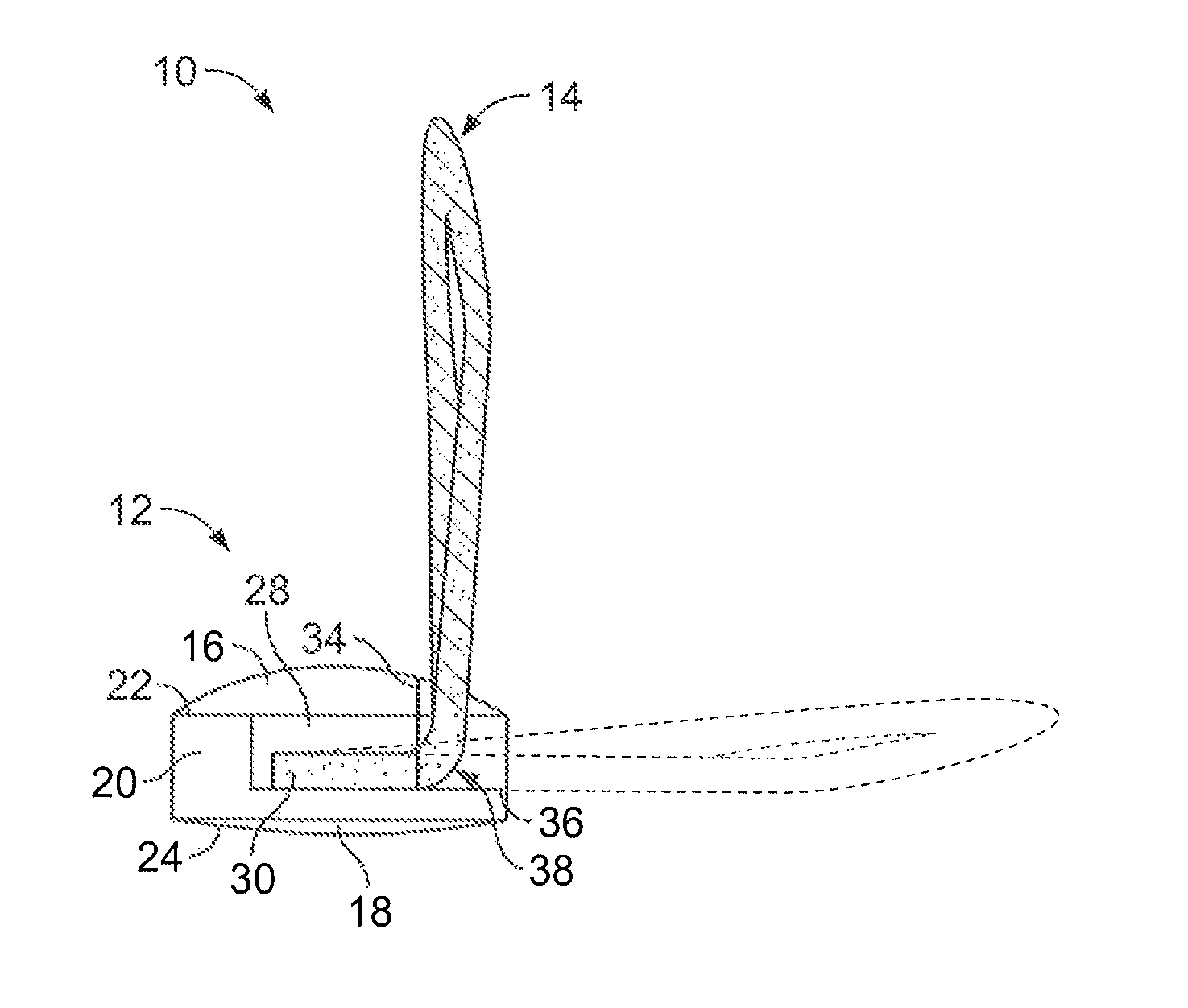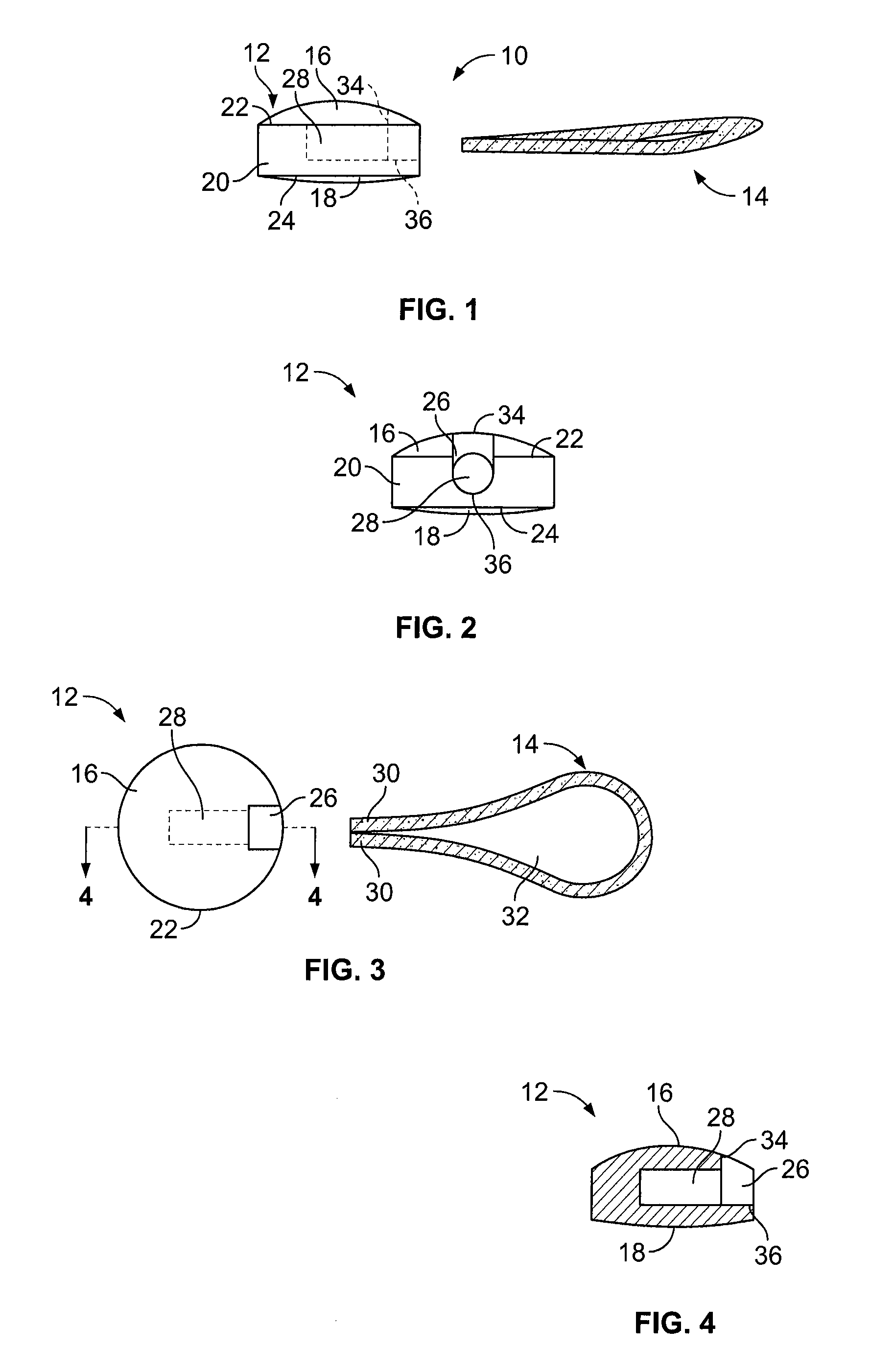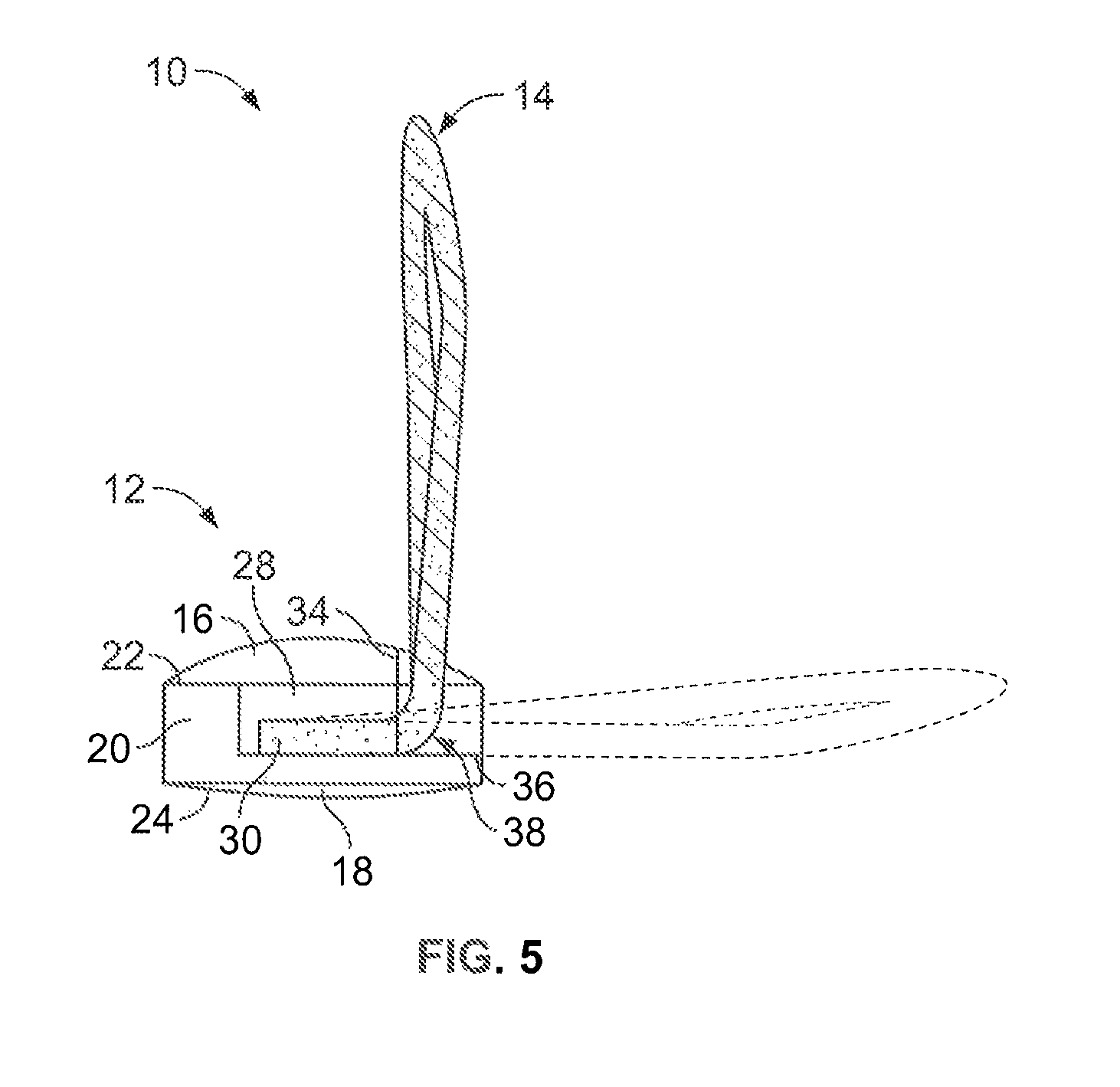Garment fastening systems
a technology for fastening systems and garments, applied in the field of garment fastening systems, can solve the problems of shortened sleeves, shrinkage of fabrics, obesity of people, etc., and achieve the effects of providing flexibility, simple and cheap solution, and more flexibility
- Summary
- Abstract
- Description
- Claims
- Application Information
AI Technical Summary
Benefits of technology
Problems solved by technology
Method used
Image
Examples
Embodiment Construction
[0046]The following examples are presented in a non-limitative manner.
[0047]For example, the button member can have general shape of a disc. For example, one of the opposed walls can be convex. For example, the button member can comprise a peripheral edge disposed between the one of the opposed walls and the side wall, the portion of the one of the opposed walls and the portion of side wall being adjacent to the peripheral edge.
[0048]For example, the resilient member can be an elastic member.
[0049]For example, the aperture can be dimensioned for allowing a pivotal movement towards the side wall and towards the one of the opposite wall. For example, the aperture can be dimensioned for allowing a pivotal movement of the resilient member from a first position whereat the resilient member abuts the portion of the one of the opposite walls to a second position whereat the resilient member abuts the portion of the side wall.
[0050]For example, the systems of the present disclosure can be p...
PUM
 Login to View More
Login to View More Abstract
Description
Claims
Application Information
 Login to View More
Login to View More - R&D
- Intellectual Property
- Life Sciences
- Materials
- Tech Scout
- Unparalleled Data Quality
- Higher Quality Content
- 60% Fewer Hallucinations
Browse by: Latest US Patents, China's latest patents, Technical Efficacy Thesaurus, Application Domain, Technology Topic, Popular Technical Reports.
© 2025 PatSnap. All rights reserved.Legal|Privacy policy|Modern Slavery Act Transparency Statement|Sitemap|About US| Contact US: help@patsnap.com



